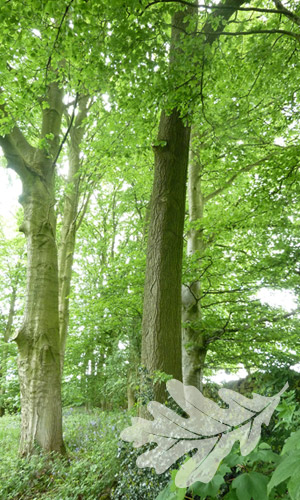
Unlike many other woodland burial sites presently in existence, which are ostensibly an extension of an existing traditional cemetery, Tarn Moor Memorial Woodland is created from a virgin site, a former meadow, and is planned from the outset with an indigenous broad-leaved woodland as its objective some fifty years down the line.
This is turn will sit in juxtaposition with other ecological initiatives undertaken and planned by the Trust which will culminate in the woodland being the focal point of an accessible wildlife corridor linking with the outskirts of Skipton.
To this end, the choice of tree species is quite prescriptive to suit the location and purpose being predominantly Sessile Oak and Downy Birch. The Oak is the only ‘dedicated tree’ available which is planted at the outset at mature spacings and will remain undisturbed, whilst the Birch acts as a nurse crop and can be thinned and replaced as needs dictate without complication. Other species in time will be introduced as the woodland matures, mainly as understorey and shrub layer species, and could include Rowan, Apple, Wild Cherry, Field Maple and Holly.
Mindful of the status of the site as a nature reserve initial work incorporated enhancement of the existing boundaries with the coppicing and replanting of conservation hedgerows augmented with appropriate hedgerow trees. The entire area ploughed over and reseeded with an appropriate mix of wild flower and low maintenance, fine-leafed grass seed. Some initial tree planting to establish the core of the woodland and subsequent burials and tree planting will expand outwards from this central area developing the natural form of the woodland.
In order to maximise the biodiversity of the site a variety of complementing habitats have been incorporated which include glades, coppice, scrub and wild flower meadow all with an open-plan and natural aspect. Each of these is managed in traditional manner including the cutting back of coppice and hedgerow species, the thinning and replacement of overgrown or damaged and diseased trees, mowing of the meadow and the general grazing of the site by sheep. All maintenance practices are ecologically viable and do not violate the nature reserve status or compromise the alternative function of the site.


